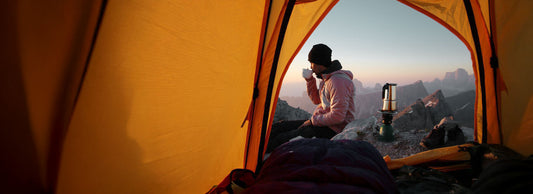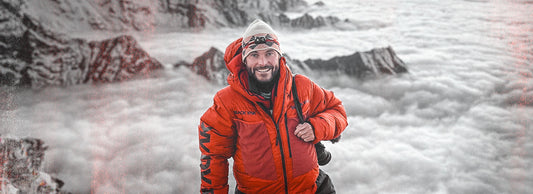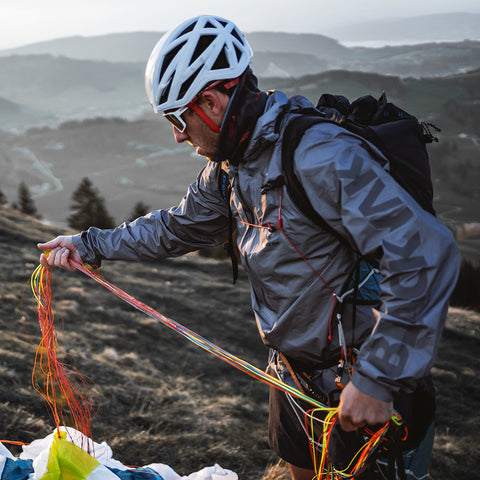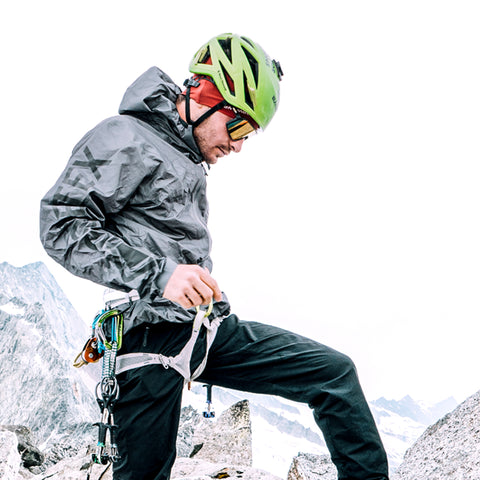High alpine tours in summer
It is slowly becoming summer. The snow on the higher mountains of the Alps is receding, the temperatures are rising, the first ridges are somewhat free of snow and the days are getting longer. This creates the perfect mix for beautiful alpine tours of any difficulty.

But before you start now, it is important to plan your high-altitude tour in the best possible way, here are a few essential tips for planning at home:
- Choice of tour:
Of course, every climber wants to climb Mont Blanc, but it is a long way to get there. It is important not to overestimate yourself and to slowly approach more difficult and longer tours. My tip, be cautious, increase the difficulty of your tour over time and slowly get to know yourself and your abilities in the high mountains. You will then recognize the right time for the more difficult tour yourself.
- Timing of the tour:
Once you have chosen your tour, it is now important to find the right time. This is crucial for the success of the tour and can make the tour much more difficult if you choose the wrong time. Snow and especially the snow melt play a major role here. If some tours still require quite a lot of snow, then for others it is important that the snow is already firmly melted. So there are tours that go well in early summer and have increasingly poor conditions in the course of the summer and vice versa. Tours that get better and better in the course of the summer.
-
You ask the hut host: a short call to the hut will already give you a lot of information about the tour. The host of the hut is usually well informed, because he is in daily conversation with the climbers.
-
You look on the Internet: there you can often find tour reports from climbers who have just made the tour, they can also give you many useful details about the current conditions of the tour.
-
You get information from classic guides: there you will find general information about the tour, which you can then adapt to the actual conditions.

Essential for the right time of the tour, is finally also the weather, which must fit. Bad weather in the high mountains is not to be underestimated. It is therefore important to collect a lot of information from various weather reports and to proceed precisely and carefully here - even if everything else would fit right now, the weather decides whether it can be implemented.
- Packing your backpack:
The golden middle way is the key to success. Here, too, it is important to find out exactly what is really needed. In the beginning, you always tend to take more with you than is necessary. But this is just as much a mistake as taking too little. Experience plays a big role here. Excess baggage always makes a tour heavier than it is. So, think carefully about what you pack in your backpack.
https://global.blackyak.com/en/collections/hochtouren
What to pack in terms of technical equipment, you can find below this blog post.

The tour is now chosen, the right time found, the backpack packed, and you are ready to go. Here are a few tips for the tour:
-
Choose the right start time to make the most of the daylight. It will not help you if you start before sunrise and then have to wait for daylight at the entrance to the grade or the climbing passage in the dark, sweaty and at the coldest time (i.e. shortly before sunrise).
-
In the evening in the hut, lay everything out well, otherwise the stress or fatigue can mess up your planned start.
-
Organize your backpack. The things that are needed at the beginning of the tour should be on top.
-
Don't let the other climbers and their headlamps, which are visible in the dark, put you under pressure. You have planned your tour well and do not need to look at the others.
-
Move on quickly, but without stress. Nobody wants to wade through the heavily softened snow on the glacier in the afternoon.
-
Put a GPS track of your tour on your cell phone, this can help you out in an emergency.
I wish you now still much success on your mountain adventures and always come back well.
Finally, it should be said that of course you should never be alone on the road. In order to slowly approach high altitude tours, a high-altitude tour course with a state-certified mountain guide should be completed in any case. Even after that, we recommend high altitude tours only in the company of professional mountain guides.
Packinglist:
Technical equipment:
- backpack (approx. 40 liters, with pick attachment)
- mountain boots (with profile sole, suitable for crampons - ideal: toggle binding at the back)
- Rockfall helmet (not older than 5 years)
- harness (adjustable, not older than 5 years)
- 3 rope cords, ∅ 5-6 mm (1 m, 3 m and 4 m)
- 2 webbing slings: sewn, length 120 cm (= circumference 240 cm)
- 1 webbing sling: sewn, length 60 cm (= circumference 120 cm)
- 1 HMS carabiner
- 3 carabiners with locking device
- 1 carabiner with 3 way locking device (e.g. Ball Lock, Rondo 4 Lock etc.)
- 2 carabiners without locking device (=snapper)
- 1 ice axe (approx. 60 cm)
- 1 ice screw (approx. 22 cm, modern design)
- crampons with antistoll plate (adapted)
- 1 belay device "Tuber with plate function" (ATC-Guide, Reverso 3, ...)
- wedges and friends
- 2 express slings
Orientation:
- Maps (AV, ÖK, Tabacco, LK Switzerland, ...)
- area guide
- Altimeter (-clock)
- Busssole (=compass with bearing device)
- GPS (GLOBAL POSITIONING SYSTEM)
Emergency equipment:
- First aid (incl. rescue blanket, blister plaster)
- bivouac sack
- headlamp
- Pocket knife/multifunctional tool
- cell phone
sun protection:
- Sunglasses/glacier goggles (high quality lens).
- Sun hat/buff/shield cap
- Sunscreen (min factor 30)
- lip protection
Provisions:
- Drinking/thermos bottle (approx. 1 liter)
- Tour food (according to preference e.g. muesli/fruit bars, dried fruit, bacon, bread)
Overnight stay:
- Washing kit
- Hut sleeping bag (silk/cotton)
- hut shoes
- ID card
- cash








